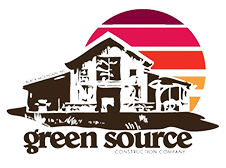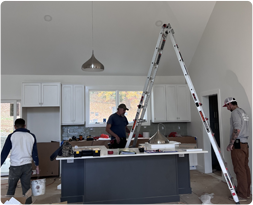In the pursuit of a greener planet, eco-friendly home renovations have become an increasingly popular trend among homeowners. Through increased energy efficiency, these improvements lessen your environmental impact and save you money over the long run. Using sustainable procedures and materials, your home renovation projects can contribute to the global effort to battle climate change and create a healthier living environment. These are crucial points for optimizing sustainability and energy efficiency in your home remodeling projects.
Conduct an Energy Audit
Knowing how much energy your house uses now is essential before renovating. An energy audit, carried out by a professional or on your own, can find energy waste. This assessment can help you prioritize your renovation projects by highlighting the most critical areas for improvement. Heating and air conditioning systems, windows and doors, lighting, and insulation are essential to pay attention to.
Enhance Insulation and Sealing
Enhancing the insulation and sealing in your home is one of the best ways to increase its energy efficiency. Maintaining a constant interior temperature lowers the demand for excessive heating and cooling when proper insulation is in place. Consider insulating your basement, walls, floors, and attic to reduce heat transfer. In addition, drafts can be avoided, and energy loss can be decreased by caulking gaps and cracks surrounding windows, doors, and other openings.
Upgrade to Energy-Efficient Windows and Doors
In many homes, windows, and doors are the main places where heat escapes. Switching to energy-efficient models can greatly decrease your heating and cooling expenses. To improve insulation, look for windows with gas fills between the panes, low-emissivity (Low-E) coatings, and double or triple glazing. Moreover, energy-efficient doors that feature weatherstripping and a solid core can help regulate inside temperature.
Install a Programmable Thermostat
A programmable thermostat is an easy-to-use yet powerful tool for controlling your house’s energy use. By programming your thermostat to change the temperature on its own according to your schedule, you can prevent wasteful heating or cooling while you’re away from home. By learning your preferences and giving you real-time statistics on energy usage, smart thermostats go above and beyond this, enabling even higher levels of efficiency.
Opt for Energy-Efficient Appliances
When remodeling your house, energy-efficient appliances are a good option to replace outdated ones. Over time, energy-efficient appliances, including stoves, dishwashers, washing machines, and refrigerators, have advanced significantly. Seek out the ENERGY STAR designation, which certifies that the appliance satisfies stringent U.S. Environmental Protection Agency energy efficiency standards.
Incorporate Renewable Energy Sources
One excellent method to improve sustainability in your home is to incorporate renewable energy sources. Solar panels, wind turbines, and geothermal systems can significantly decrease your dependency on non-renewable energy sources. These systems frequently pay for themselves over time through lower energy costs and possible tax incentives, even if the initial investment may be larger.
Use Sustainable Building Materials
Selecting environmentally friendly building materials for your renovations might have a significant effect. Seek materials that come from renewable resources, are recycled, or are recovered. Take into account the materials’ longevity and durability as well to minimize the need for frequent replacements.
Implement Water-Saving Fixtures
An essential component of eco-friendly house remodeling is water conservation. Water-saving fixtures can drastically lower the amount of water used in your home. Seek low-flow toilets, faucets, and showerheads that conserve water without sacrificing functionality. To collect and use rainwater for irrigation and other non-potable needs, consider building a rainwater harvesting system.
Improve Indoor Air Quality
The importance of indoor air quality in sustainable house renovations is sometimes underestimated. Poor air quality might adversely affect your health and well-being. To enhance indoor air quality, use low-VOC (volatile organic compound) paints, adhesives, and finishes, which emit fewer dangerous chemicals. Also, make sure your property has enough ventilation throughout to lessen indoor pollutants.
Landscape for Energy Efficiency
The landscaping around your house can also help to increase energy efficiency. By carefully placing trees and plants, you can reduce the demand for air conditioning in the summer by creating natural shade. Evergreen trees can serve as windbreaks in the winter to keep heat from escaping your house. Additionally, consider adopting native plants, which need less upkeep and water.
Install Efficient Lighting
Another area where you may significantly increase energy efficiency is lighting. Energy-efficient LED or CFL bulbs, which consume less energy and have a longer lifespan, should be used instead of conventional incandescent bulbs. To further cut down on energy usage, think about adding timers, motion sensors, and dimmer switches.
Consider a Green Roof
A living roof, often known as a green roof, has flora growing entirely or in parts of it. In addition to managing stormwater runoff and reducing the urban heat island effect, green roofs offer superior insulation. They also enhance the quality of the air and provide habitats for wildlife. Although structural considerations and upkeep are necessary, green roofs have many positive environmental effects.
Smart home technology can enhance your home’s energy efficiency by automating and optimizing various systems. Intelligent appliances, thermostats, and lighting may all be operated more effectively and controlled from a distance. For instance, water can be saved by using intelligent irrigation systems that can modify watering schedules in response to weather.
Conclusion
Eco-friendly home renovations offer many benefits, from reduced energy bills to a healthier living environment and a smaller carbon footprint. You may improve your home’s sustainability and energy efficiency by adding renewable energy sources, updating energy-efficient windows and doors, improving insulation, and performing an energy audit. A greener, more sustainable home also benefits from water-saving fixtures, enhanced indoor air quality, and sustainable building materials.
Remember that even tiny adjustments can have an enormous environmental impact. Adopting these environmentally friendly remodeling ideas will improve your home’s comfort and be worthwhile, helping build a more sustainable future for future generations.

